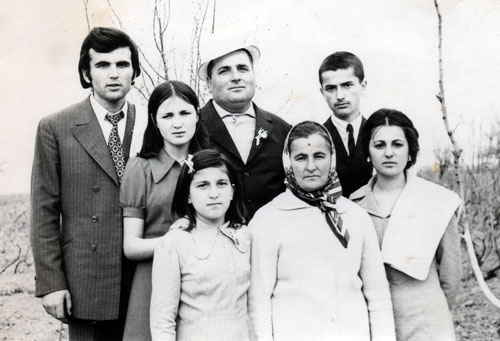I came across the first pieces of music in my early years, when I was about two and able to listen to my father’s songs. He was a good singer and most pieces he performed were “doinas”, which are lyrical pieces with accents of melancholy, longing (dor), love for nature or just a way of releasing the sadness and soreness of the singer’s soul.
Even from an early age I felt that those songs were meant to cheer my people up somehow and make them move on. The doina’s sad tonality and harmonies were a mystery to me at that age. Later on I realised that these songs helped people around me recall better moments of their lives and share their hopes for the future.
My father used to sing doinas at home and never outside. He considered the performance very personal and shared it only with his loved ones. At the end of each performance both parents used to heave a sigh. Shortly after they went on with their work as nothing happened; the song meaning and emotional value were apparently forgotten. It appeared to me that the song was something that brought back the energy they needed to go on.
The weddings and the family parties were the moments when we listened to other kinds of music and not only doinas. When I was a child, the music I heard around me was genuine folk music. I use the word “genuine” because the songs were unpolluted by the well-known strong ideology accents of the 70’s and the 80’s.
With each wedding we got familiar with songs from different regions of the country. We liked them or not depending on their first performer and how much of the original was preserved by the local fiddlers and their abilities to adapt and bring them back to their audiences. The wedding music was not performed by a singer, but by fiddlers themselves who created instrumental versions so that their performance pleased people and encouraged them to dance.
Some years after, when vinyl record players became affordable, wedding organisers still preferred to hire fiddlers to enjoy live music as people used to judge the event according to the music quality and type (either live or recorded), food, drink and ceremony quality. They actually ranked each event based on this set of criteria. At the end that would have been the reason for people to attend or not such future events organised by the same family.
More articles in English
15.11.2013 First trip to Paris, the City of Lights
15.11.2013 Belgium, the bridge between Germanic and Latin Europe
10.11.2013 The Four Seasons of my Earlier Years: Autumn, grapes and wine
08.11.2013 The Four Seasons of my Earlier Years: Autumn Flavours and Weddings
03.11.2013 The Four Seasons of my Earlier Years: One can’t judge a book by its cover
30.10.2013 My path to learning French
24.10.2013 The Four Seasons of my Earlier Years: The Bitter Taste of My Summers
17.10.2013 The Four Seasons of my Earlier Years: My Spring
14.10.2013 The Four Seasons of my Earlier Years: Winter Customs and Traditions (2)
11.10.2013 The Four Seasons of my Earlier Years: Winter Customs and Traditions (1)
02.10.2013 A culture of measuring twice and cutting once: Early years (Part 2)
20.09.2013 A culture of measuring twice and cutting once: Early years (Part 1)
08.09.2013 How and where to start: The beginning

